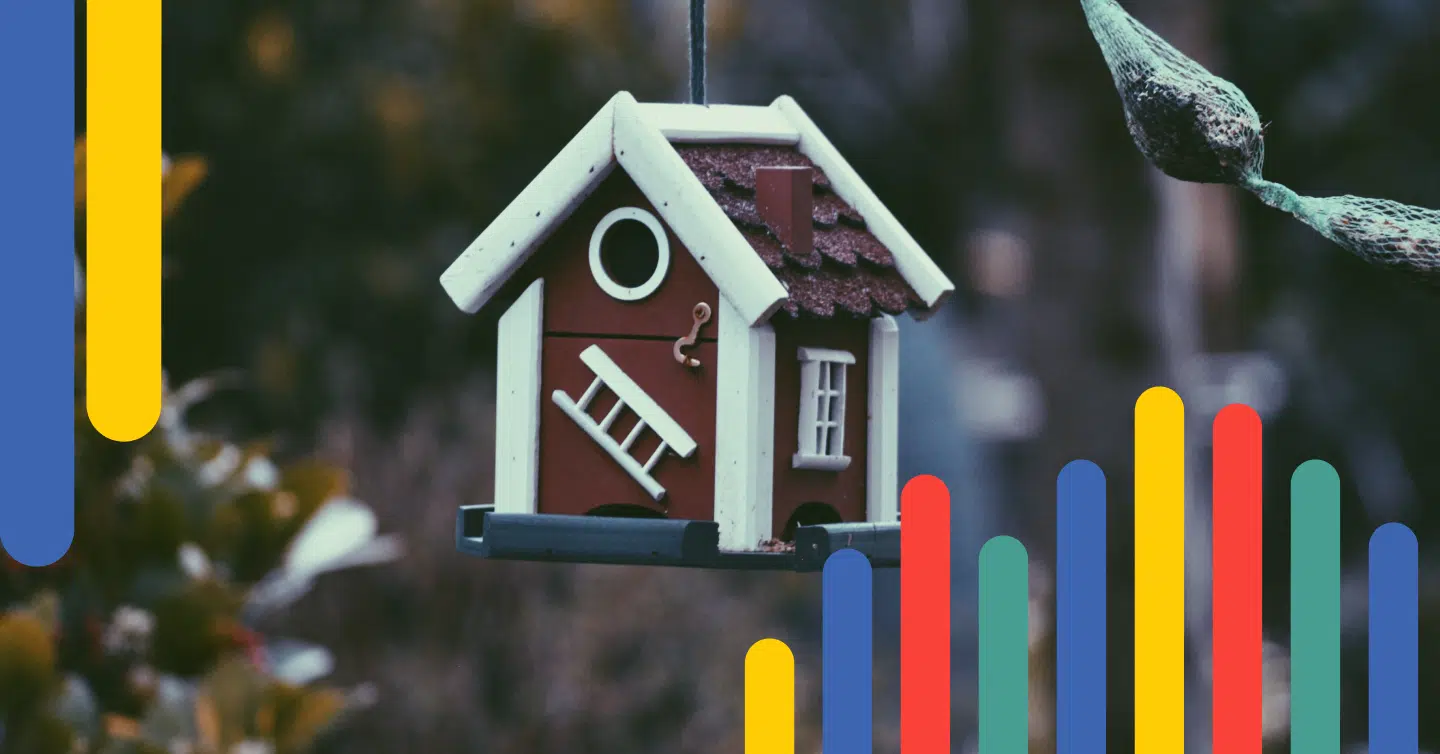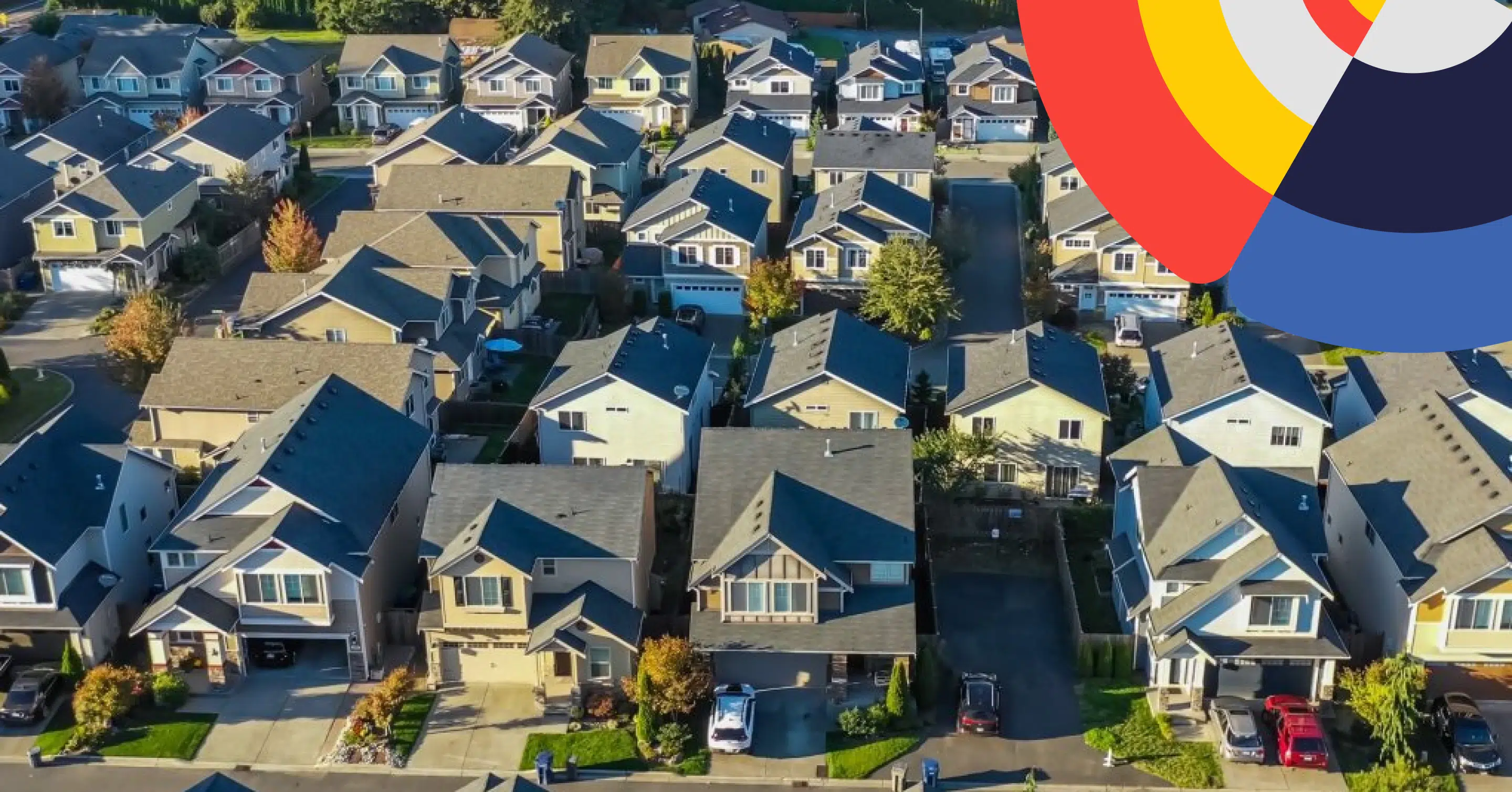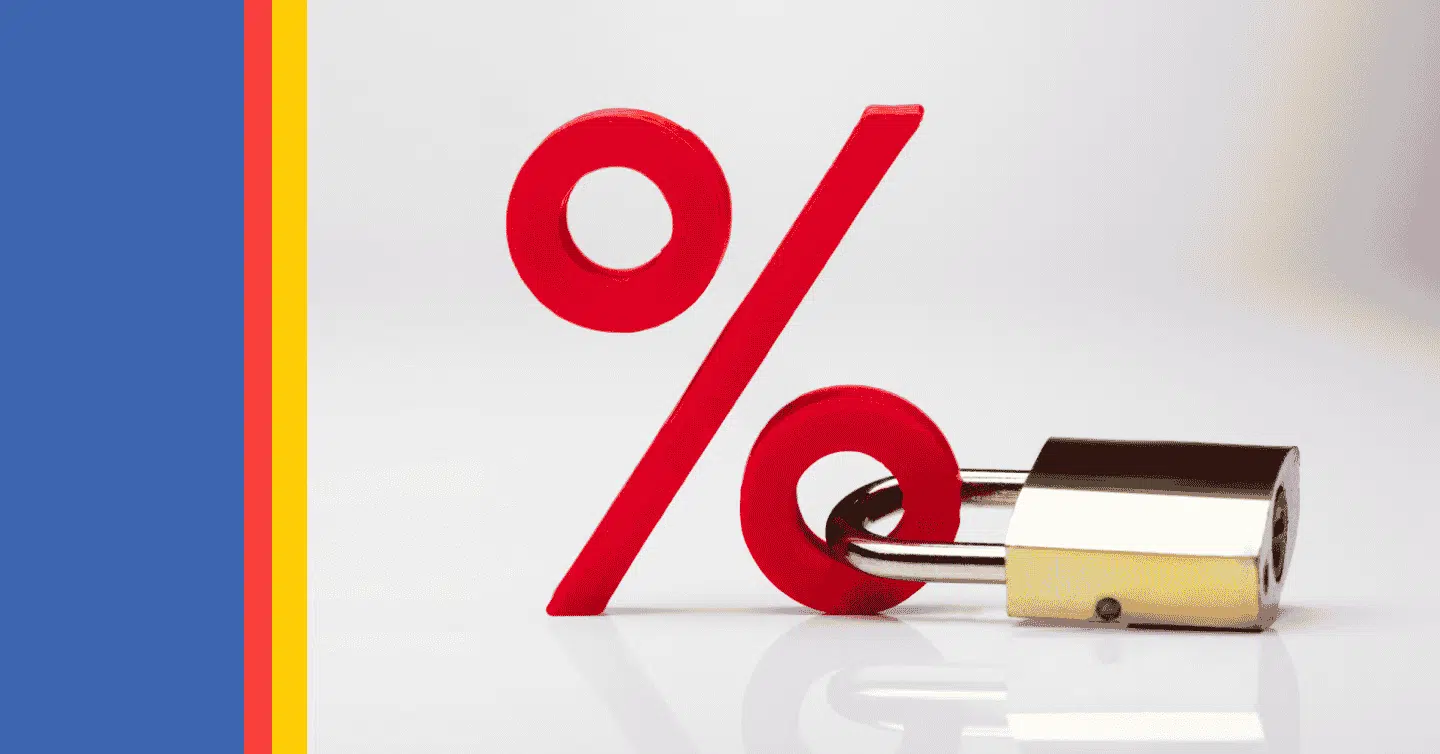Renouvellement et Refinancement #Guides
Renouvellement et Refinancement #Guides
5 façons d'éviter l'amortissement négatif de votre hypothèque

Table des matières
Si vous détenez un prêt hypothécaire, vous êtes probablement familier avec le concept d’amortissement. Il s’agit du remboursement progressif de votre prêt au fil du temps par le biais de versements réguliers. Cela vous permet d’accroître la valeur nette de votre propriété. Cependant, un scénario appelé amortissement négatif peut entraver votre progression dans la constitution de ce capital et entraîner des difficultés financières. L’amortissement négatif se produit lorsque vos versements hypothécaires mensuels ne suffisent pas à couvrir l’intérêt dû, ce qui a pour effet d’augmenter le solde de votre prêt au lieu de le réduire.
Ce guide complet explore les subtilités de l’amortissement négatif et propose 5 méthodes efficaces pour se sortir de cette situation épineuse. Nous expliquerons comment se produit l’amortissement négatif, pourquoi il est essentiel d’y remédier rapidement et nous présenterons les actions à prendre pour résoudre ce problème et protéger votre santé financière.
Les grandes lignes
- On parle d’amortissement négatif lorsque vos versements hypothécaires mensuels ne suffisent pas à couvrir l’intérêt dû, ce qui a pour effet d’augmenter le solde de votre prêt.
- L’amortissement négatif se produit généralement avec les hypothèques à taux variable (VRM) et les hypothèques à paiement d’intérêt seulement.
- Augmenter vos versements, passer à un prêt hypothécaire à taux fixe, refinancer, modifier les conditions de votre prêt hypothécaire et demander des conseils professionnels sont des stratégies efficaces pour contrer l’amortissement négatif et le choc des paiements.
Meilleurs taux hypothécaires
0.00%3 Year Fixe
Obtenez votre taux0.00%5 Year Fixe
Obtenez votre tauxQu’est-ce que l’amortissement négatif?
On parle d’amortissement négatif lorsque vos versements hypothécaires mensuels sont insuffisants pour couvrir à la fois l’intérêt et le capital. L’intérêt non payé augmente le solde du prêt au lieu de le diminuer sur une période donnée.
- Le suramortissement d’un prêt hypothécaire à taux variable (VRM) se produit lorsque la composante intérêt de votre versement hypothécaire dépasse le montant du versement fixe. Cet intérêt non payé entraîne l’ajout de l’intérêt différé au solde du capital.
- Par conséquent, le solde de votre prêt augmente et vous pouvez vous retrouver à devoir plus que le montant initial du prêt. Si les versements prévus ne sont pas augmentés au fur et à mesure que le solde de l’hypothèque augmente, l’hypothèque risque d’être suramortie par rapport à son calendrier d’amortissement.
L’amortissement négatif, également appelé suramortissement, est généralement associé aux prêts hypothécaires à taux variable (VRM) et aux plans de paiement d’intérêt seulement.
- Dans le cas des prêts hypothécaires à taux variable (VRM), le taux d’intérêt fluctue en fonction des conditions du marché. Si le taux augmente de manière significative, il se peut que votre versement mensuel ne suffise pas à couvrir l’augmentation de l’intérêt.
- Les plans de paiement d’intérêt seulement permettent aux emprunteurs d’effectuer des paiements minimaux qui ne couvrent que la partie intérêt du prêt, ce qui entraîne un report des paiements du principal et un risque plus élevé d’amortissement négatif.
Meilleurs taux hypothécaires
0.00%3 Year Fixe
Obtenez votre taux0.00%5 Year Fixe
Obtenez votre tauxComment se sortir d’une situation d’amortissement négatif?
Si vous vous trouvez dans une situation d’amortissement négatif, il est essentiel de prendre des mesures proactives pour y remédier et protéger votre santé financière.
Le remboursement intégral du solde de votre prêt hypothécaire est la solution la plus facile et la plus simple, bien que la plupart d’entre nous n’aient pas les moyens de le faire.
Voici 5 méthodes efficaces pour vous sortir de l’amortissement négatif de votre hypothèque :
Méthode 1 : Augmentez vos versements pour réduire l’amortissement négatif
L’augmentation de vos versements hypothécaires mensuels est l’un des moyens les plus simples de lutter contre l’amortissement négatif. En payant plus que le montant minimum requis, vous pouvez réduire l’écart entre votre paiement et l’intérêt dû, ce qui permet de s’attaquer efficacement à l’augmentation du solde du prêt. Voici quelques stratégies à envisager :
- Augmentation proactive des versements : Si vous craignez d’entrer dans un amortissement négatif ou si vous en êtes déjà victime, envisagez d’augmenter vos versements de manière proactive. Vous pouvez le faire en effectuant des versements plus fréquents ou en augmentant le montant de vos versements. En alignant vos versements sur les conditions initiales de votre contrat, vous pouvez atténuer l’impact négatif de l’accumulation d’intérêt.
- Paiements anticipés forfaitaires : Une autre stratégie efficace consiste à effectuer des versements forfaitaires ou supplémentaires sur votre prêt hypothécaire. En versant une somme plus importante, vous pouvez réduire le solde du principal et diminuer le montant de l’intérêt couru. Cette méthode peut être particulièrement avantageuse si vous êtes à mi-parcours de votre prêt hypothécaire et que vous vous attendez à une baisse prochaine des taux d’intérêt.
Il est important de noter que si vous avez un prêt hypothécaire fermé, vous pouvez encourir des frais d’intérêt supplémentaires lorsque vous effectuez des versements anticipés forfaitaires ou que vous augmentez vos versements réguliers au-delà de votre limite de paiement. Examinez les conditions de votre contrat hypothécaire et consultez votre prêteur pour comprendre les implications potentielles avant de procéder.
Méthode 2 : Passez à un prêt hypothécaire à taux fixe
Si vous avez actuellement un prêt hypothécaire à taux variable et que vous êtes confronté à un amortissement négatif, le passage à un prêt hypothécaire à taux fixe peut vous apporter de la stabilité et vous aider à éviter de nouvelles augmentations du solde de votre prêt. Un taux d’intérêt fixe vous permet d’établir des versements mensuels réguliers et de vous protéger contre les futures hausses de taux d’intérêt.
Voici ce qu’il faut prendre en compte :
- Consultez votre prêteur hypothécaire : Contactez votre prêteur hypothécaire actuel pour envisager de convertir votre prêt hypothécaire à taux variable en prêt hypothécaire à taux fixe. Celui-ci pourra vous renseigner sur les options possibles, les éventuels frais associés et le processus.
- Évaluez les avantages et les inconvénients : Avant de convertir votre prêt hypothécaire, évaluez bien les avantages et les inconvénients du prêt hypothécaire à taux fixe. Bien qu’il offre une stabilité et une protection contre la fluctuation des taux d’intérêt, il est généralement assorti de taux légèrement plus élevés que le prêt hypothécaire à taux variable. Analysez vos objectifs financiers à long terme, évaluez votre tolérance au risque et consultez des experts hypothécaires pour déterminer si une hypothèque à taux fixe est le bon choix pour vous.
Si vous estimez que les taux d’intérêt se sont stabilisés et que vous disposez des liquidités nécessaires pour rembourser votre prêt hypothécaire par anticipation afin de revenir à votre calendrier d’amortissement initial, envisagez de demander à votre prêteur de convertir votre prêt hypothécaire à taux variable à paiements fixes (VRM) en un prêt hypothécaire à taux variable à paiements ajustables (ARM). Un prêt hypothécaire à taux variable (ARM) ne présente pas de risques liés au taux de déclenchement, au seuil de déclenchement ou à l’amortissement négatif, qui affectent les prêts hypothécaires à taux variable (VRM).
Meilleurs taux hypothécaires
0.00%3 Year Fixe
Obtenez votre taux0.00%5 Year Fixe
Obtenez votre tauxMéthode 3 : Refinancez votre hypothèque
Le refinancement de votre hypothèque consiste à obtenir un nouveau prêt pour remplacer le prêt existant, souvent à des conditions plus favorables. Il peut s’agir d’une stratégie intéressante pour remédier à l’amortissement négatif et améliorer votre situation financière.
Voici comment cela fonctionne :
- Évaluez vos options : Faites le tour des prêteurs et des produits hypothécaires et comparez-les pour trouver l’option de refinancement la mieux adaptée à vos besoins. Tenez compte de facteurs comme les taux d’intérêt, les modalités de remboursement, les frais de clôture, les caractéristiques et les pénalités éventuelles en cas de remboursement anticipé.
- Améliorez votre cote de crédit : Avant de demander un refinancement, améliorez votre cote de crédit. Une meilleure cote de crédit peut vous aider à obtenir un meilleur taux d’intérêt et de meilleures conditions de prêt, ce qui vous permettra d’économiser de l’argent à long terme. Le remboursement de dettes comme les prêts étudiants ou les cartes de crédit, le respect des délais de paiement et la correction des erreurs ou omissions dans votre dossier de crédit peuvent améliorer votre cote de crédit.
- Calculez les économies potentielles : Servez-vous d’un tableau d’amortissement ou d’une calculatrice hypothécaire en ligne pour estimer l’impact d’un refinancement sur vos versements mensuels et vos frais d’intérêt. Comparez ces chiffres à ceux de votre prêt hypothécaire actuel pour déterminer si le refinancement est financièrement avantageux à long terme.
- Envisagez un terme plus court : Si vous pouvez vous permettre de faire des versements mensuels plus élevés, envisagez de refinancer votre prêt hypothécaire pour le remplacer par un prêt à plus court terme. Lorsque le marché est favorable ou que le prêteur est en période de promotion, les termes plus courts sont assortis de taux d’intérêt plus bas et vous permettent de rembourser votre prêt hypothécaire plus rapidement, réduisant ainsi le risque d’amortissement négatif.
Méthode 4 : Modifiez votre terme hypothécaire
Une autre façon de remédier à l’amortissement négatif est de modifier les conditions de votre contrat hypothécaire. En modifiant le délai de remboursement du prêt, vous pouvez réduire vos versements mensuels et minimiser l’impact de l’amortissement négatif.
Voici ce que vous devez savoir :
- Évaluez vos options : Examinez votre contrat hypothécaire actuel et envisagez d’opter pour un terme différent qui corresponde mieux à vos objectifs financiers. Par exemple, si vous avez un amortissement de 20 ans, le fait de passer à un amortissement de 25 ans peut vous aider à mieux gérer vos versements tout en réduisant le risque d’amortissement négatif.
- Consultez votre prêteur : Contactez votre prêteur hypothécaire pour discuter de la possibilité de modifier votre hypothèque. Celui-ci pourra vous conseiller sur les différentes options, les frais associés et l’impact potentiel sur vos versements mensuels. Vous pouvez aussi avoir recours à un courtier hypothécaire qui n’est pas associé à votre prêteur et qui vous fournira des conseils honnêtes et transparents en fonction de votre situation.
- Calculez l’impact : Utilisez un tableau d’amortissement ou une calculatrice hypothécaire en ligne pour comparer les versements mensuels et le coût total de l’intérêt pour différents termes hypothécaires. Une analyse des économies réalisées entre les différentes options vous aidera à évaluer les implications financières et à prendre une décision en toute connaissance de cause.
Méthode 5 : Demandez l’avis d’un professionnel
Si vous avez besoin d’aide pour déterminer le meilleur plan d’action ou de conseils personnalisés, il est préférable de demander l’avis d’un professionnel. Les experts hypothécaires, les conseillers financiers et les courtiers hypothécaires peuvent vous fournir des conseils précieux adaptés à votre situation. Ils peuvent évaluer votre situation financière, analyser les conditions de votre prêt hypothécaire actuel et recommander des stratégies pour remédier à l’amortissement négatif.
Voici comment ils peuvent vous aider :
- Conseils d’experts : Les conseillers hypothécaires ont une connaissance approfondie du secteur hypothécaire et peuvent vous guider à travers les complexités de l’amortissement négatif. Ils peuvent vous présenter les options qui s’offrent à vous, vous aider à comprendre les risques et les avantages potentiels et vous faire des recommandations en fonction de votre situation particulière.
- Aide à la modification de prêt : Si vous éprouvez des difficultés financières en raison d’un amortissement négatif, les experts hypothécaires peuvent vous aider à explorer les options de modification de prêt. Ils peuvent négocier en votre nom avec votre prêteur pour réduire votre taux d’intérêt, prolonger le terme de votre prêt ou modifier d’autres conditions de l’hypothèque afin de la rendre plus facile à gérer.
- Recommandation de professionnels juridiques : Dans certains cas complexes, les experts hypothécaires peuvent vous orienter vers des juristes spécialisés dans le droit hypothécaire. Ces professionnels peuvent vous donner des conseils juridiques, examiner votre contrat de prêt hypothécaire et vous aider à gérer les conséquences juridiques du règlement de l’amortissement négatif.
Foire aux questions
Bienvenue dans notre section foire aux questions (FAQ), où nous répondons aux questions les plus courantes, élaborées par nos experts hypothécaires afin de vous aider à prendre les meilleures décisions en matière de financement hypothécaire.
Que dois-je faire si mon prêt hypothécaire présente un amortissement négatif?
Le moyen le plus simple de remédier à l’amortissement négatif de votre prêt hypothécaire est d’augmenter le montant de vos versements hypothécaires ou de rembourser par anticipation le capital de votre prêt hypothécaire. En fonction de vos liquidités mensuelles et de votre épargne accumulée, vous pouvez opter pour l’une ou l’autre de ces options, ou pour une combinaison des deux. Avant d’exercer ces privilèges de remboursement anticipé, assurez-vous de vérifier auprès de votre prêteur les limites annuelles éventuelles afin d’éviter toute pénalité de remboursement anticipé.
Qu’est-ce qui se passe si le solde de mon prêt hypothécaire est supérieur à la valeur actuelle de ma propriété?
Si le solde de votre prêt hypothécaire est supérieur à la valeur de votre propriété, vous devrez rembourser plus que le montant initial du prêt hypothécaire. À l’échéance de votre prêt hypothécaire, vous devrez choisir entre :
- Rembourser le solde excédentaire à l’aide de votre épargne afin de retrouver des versements hypothécaires abordables.
- Refinancer votre prêt hypothécaire pour un nouveau terme avec un amortissement prolongé.
- Effectuer un choc de paiement pour compenser le solde plus élevé de votre prêt hypothécaire.
- Vendre votre propriété avec un certain profit.
Rassurez-vous : historiquement, la valeur des propriétés au Canada a toujours augmenté après une récession, et il ne s’agit là que d’un recul temporaire dû aux hausses de taux sans précédent de la Banque du Canada visant à freiner l’inflation.
Quelles sont les alternatives à l’amortissement?
Bien que l’amortissement soit la méthode la plus courante de remboursement d’un prêt, il existe des alternatives comme les paiements d’intérêt seulement et les prêts hypothécaires à paiements progressifs. Les paiements d’intérêt seulement permettent aux emprunteurs de ne payer que l’intérêt du prêt pendant une période déterminée, tandis que les prêts hypothécaires à paiements progressifs commencent par des paiements initiaux moins élevés qui augmentent progressivement au fil du temps.
Quelle est la différence entre l’amortissement négatif et l’amortissement inversé?
L’amortissement négatif se produit lorsque le solde de votre prêt augmente en raison de paiements insuffisants. L’amortissement inversé se produit lorsque le solde du prêt augmente avec le temps. L’amortissement inversé s’applique généralement à certains types de prêts, tels que les prêts hypothécaires inversés, pour lesquels l’emprunteur reçoit des paiements du prêteur au lieu d’effectuer des paiements. Dans le cas d’un prêt hypothécaire inversé, les paiements d’intérêt sont ajoutés au solde initial du capital. Toutefois, à mesure que la propriété prend de la valeur, un ratio prêt-valeur de 55 % maintient une garantie d’équité négative pendant que l’emprunteur supporte ce prêt à solde croissant.
L’amortissement négatif est-il illégal au Canada?
L’amortissement négatif n’est pas illégal au Canada. Cependant, les prêteurs doivent se conformer aux directives réglementaires et divulguer les risques de l’amortissement négatif aux emprunteurs. Il est essentiel que les emprunteurs comprennent parfaitement les conditions de leur prêt hypothécaire et les conséquences potentielles d’un amortissement excessif de leur solde impayé – également connu sous le nom d’amortissement négatif.
En conclusion
Lorsque vous êtes confronté à un amortissement négatif sur votre prêt hypothécaire, il est essentiel de prendre des mesures pour protéger votre équilibre financier.
En comprenant les causes de l’amortissement négatif et en mettant en œuvre les stratégies décrites dans le présent guide, vous pouvez surmonter cette épreuve et reprendre le contrôle de votre hypothèque. Qu’il s’agisse d’augmenter vos versements, de passer à un prêt hypothécaire à taux fixe, de refinancer, de modifier le terme de votre prêt hypothécaire ou de demander l’avis d’un professionnel, chaque méthode offre une solution viable pour remédier à l’amortissement négatif.
N’oubliez pas que l’essentiel est d’agir rapidement et de manière proactive afin d’éviter de nouvelles difficultés financières et de vous assurer un avenir financier plus radieux.
Chez nesto, nous comprenons les complexités du remboursement d’un prêt hypothécaire et nous sommes là pour vous aider à naviguer à travers le processus. Contactez nos experts en prêts hypothécaires pour obtenir des conseils personnalisés et une orientation adaptée à vos besoins. Laissez-nous vous aider à remédier à l’amortissement négatif et à atteindre vos objectifs d’accession à la propriété en toute confiance et en toute sérénité.
Prêt à vous lancer?
En quelques clics vous aurez accès à nos meilleurs taux. Ensuite, vous pourrez appliquer en ligne pour votre hypothèque en quelques minutes!
dans cette série Mortgage 101
Meilleurs taux hypothécaires
0.00%3 Year Fixe
Obtenez votre taux0.00%5 Year Fixe
Obtenez votre taux













